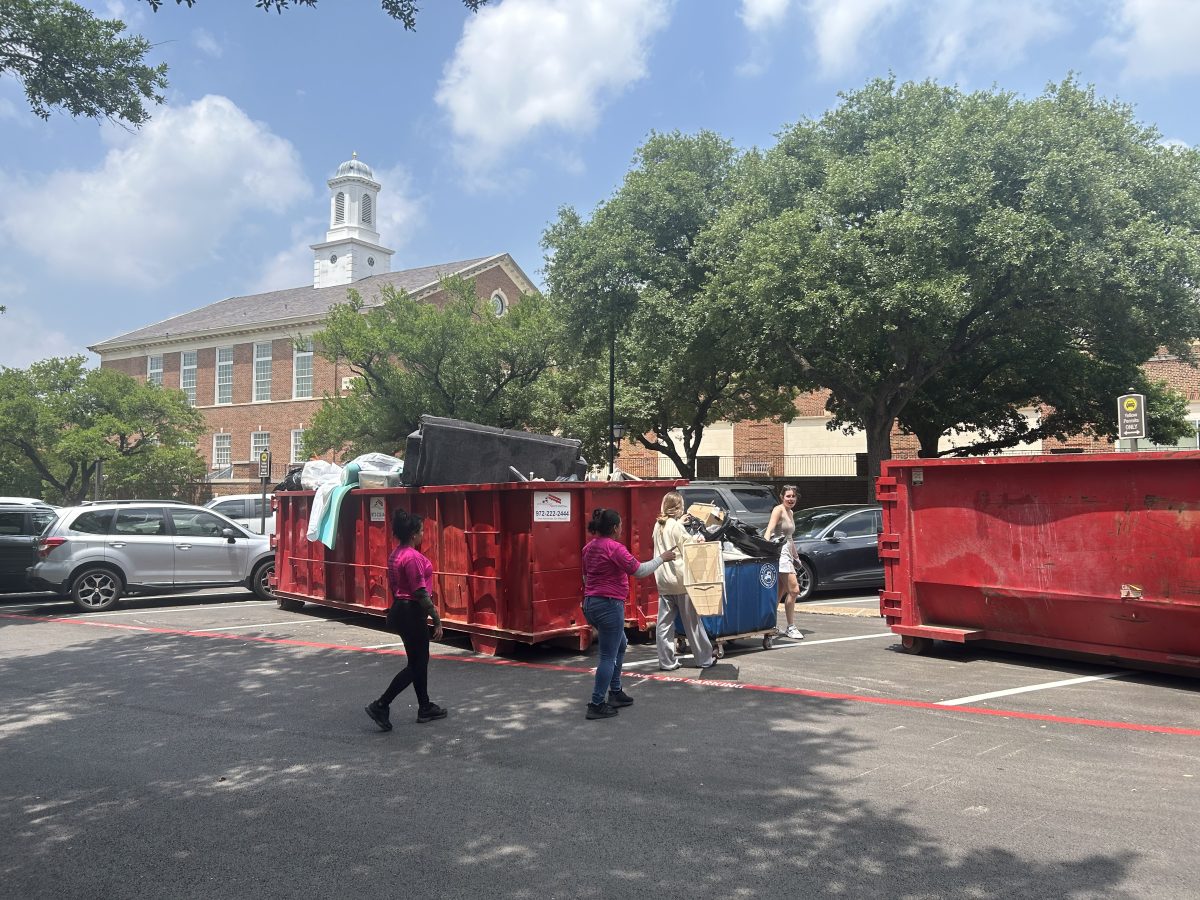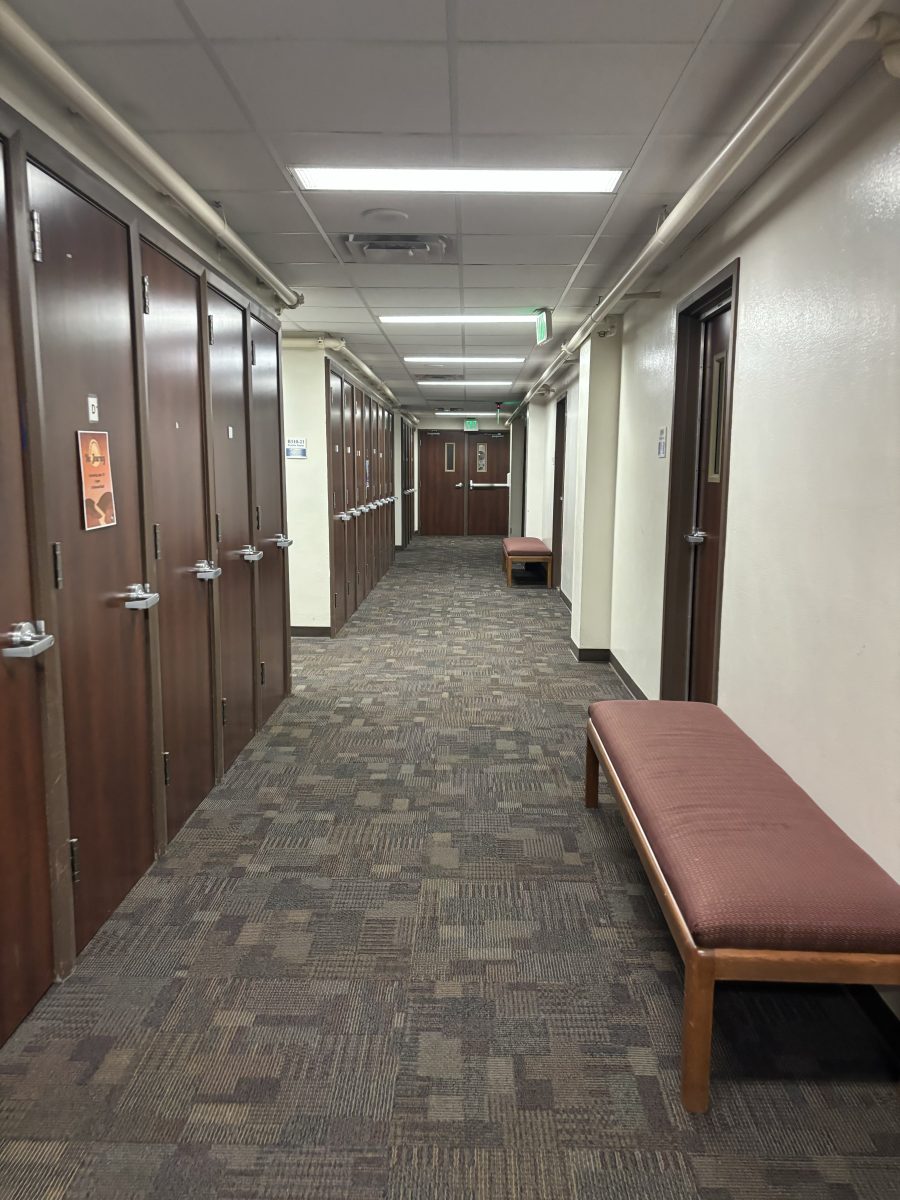Kathy La Tour is professor. She meets with her students to discuss classes, projects and off-campus internships during her office hours. She has worked at the University for a decade, and she says that she enjoys her work with the students.
However, La Tour is a non-tenure track lecturer. Even though she has worked at the university for almost 10 years, she is ineligible for tenure at SMU.
“There are 103 professors at SMU who are eligible for tenure but don’t have it,” La Tour said.
As enrollment of undergraduate and graduate students grows, increasing numbers of non-tenure faculty pose concern for universities across the nation, and SMU is no exception.
According to SMU faculty members, more full-time, non-tenure track lecturers on campus means more questions regarding salary, benefits and above all, job security.
La Tour represents all 103 of SMU’s lecturers on the non-tenure task force the Office of Academic Affairs formed in November.
“We’re not looking for tenure,” La Tour said. “We’re looking at the entire concept of non-tenure track, full-time faculty lecturers and senior lecturers.”
Dr. Ellen Jackofsky, associate provost of faculty and administrative affairs, presented statistics at November’s faculty senate meeting regarding the number of faculty members at SMU who lecture full-time but are non-tenure. According to her research, SMU employed about 6 percent of its faculty as full-time lecturers on a contract-to-contract basis in 1992. That percentage rose to 19 percent in 2002.
Tenure issues have also raised concerns at other universities. Last November, The Christian Science Monitor reported that half of the University of California’s faculty members are non-tenure lecturers. Earlier last year, part-time professors staged a three-day walkout in Berkley. The Monitor also reported that as of 2002, part-time faculty has grown by 79 percent over the past two decades, “more than 400,000 out of 1 million faculty.”
SMU has to maintain a certain number of tenured faculty members, along with other criteria set by the Commission on Colleges of the Southern Association of Colleges and Schools, to maintain their accredited university status. However, to accommodate growing student populations, schools employ a number of non-tenure track, full-time and part-time faculty members in order to meet the classroom demand.
The problem with pulling professionals out of the field and into the lecture hall, said La Tour, is that the university may feel too comfortable about letting some lecturers go and replacing them with other professors when tenure issues arise.
The nature of tenure
The Christian Science Monitor reported that hiring non-tenure faculty began in the 1980s when an increase in teacher retirements had universities scrambling to fill their classrooms.
Tenure faculty members tend to enjoy higher salaries and benefits, such as more academic freedom in their teachings.
In order to be eligible for tenure, faculty members, depending on their departments, have to put in a certain amount of lecture hours as well as conduct research and get their work published. They also have to participate in campus activities, such as sponsoring student organizations or joining faculty governing committees like Faculty Senate.
A few years down the road, faculty members are up for evaluation by their departments, regardless of whether their work has earned them tenure or not.
Tenure contracts last for many years, usually until retirement or resignation. Because tenured faculty members have a contract to protect them, they have more freedom on how they can teach and present material in the classroom.
Tenured faculty also enjoy benefits, such as paid trips to conventions and symposiums relative to their work.
In addition, tenured faculty tend to make more money than non-tenured faculty members. Student evaluations at the end of each semester, Jackofsky said, play a major role in whether a tenured faculty member receives a raise or not.
However, because of the security of the contract, tenured faculty won’t have to worry about losing their jobs, as much as non-tenured faculty will.
The nature of non-tenure
Two categories of non-tenured faculty exist: full-time and part-time. Both work on short-term contracts that last either one or three years at a time. Each time a contract is up, the faculty member has the choice of renewing the contract themselves.
However, the short contracts do not obligate the university to continue employing the lecturers, placing some non-tenured faculty on unsteady ground when it comes to job security.
Part-time faculty members, or adjuncts, have more flexibility. Since they only work on campus part-time, they tend to have off-campus jobs in the field of their chosen professions.
Regina Gaiotti in the mechanical engineering department has been an adjunct professor at SMU for two years.
She attended McGill University in Montreal before working as a research assistant and a numerical analyst. She later went to Europe with her husband to start a family.
Gaiotti moved to Dallas three years ago and started looking for jobs. Soon after, she secured a part-time position at SMU.
“I like to teach,” she said, drawing on her experiences as a teaching assistant back at McGill.
Gaiotti said she is gradually getting back into the working world after a leave of absence and said that being a part-time professor allows her the job flexibility that she needs.
However, full-time lecturers are on campus for longer hours and often don’t have off-campus jobs.
La Tour said that full-time lecturers still have the freedom to work in their respective fields. For instance, journalism professors still have the opportunity to do freelance work for broadcast stations and publications.
However, like adjuncts, full-time faculty salaries are not as high as tenure; benefits are few and job security is questionable.
The American Association of University Professors says that teachers are usually eligible for tenure after six years of instruction, also factoring in research, publications and campus service.
What’s being done
The Chronicle for Higher Education did a report on job security issues for non-tenure faculty members this year.
“Here I am with my family, living tenuously,” Mark Murphy, an aviation instructor at Western Michigan University, told The Chronicle.
Murphy, The Chronicle reported, came to the United States from Scotland in 1997 and has been on a renewable one-year contract for the last six years.
“At any state, the contract might go away, and suddenly we’re out in the cold,” Murphy said.
Western Michigan has since changed its policies to give a handful of its non-tenure-track, full-time faculty a chance to earn tenure.
However, the move has upset some faculty members on the Western Michigan campus.
“I think they gutted the tenure system,” Norman W. Hawker, a professor of finance and commercial law at Western Michigan, told The Chronicle. “Cheap faculty for the administration in these hard economic times is like heroin for a drug addict.”
So far, tenure issues have not raised major conflicts on SMU’s campus.
“Those who do not have other jobs need to be treated better,” said Glenn Linden, professor of history at SMU.
Linden has taught at the university for about 35 years. He also serves on the non-tenure task force formed by the office of Academic Affairs.
Linden agrees that non-tenure issues are serious, and that lecturers need more assurance of their job security. Students who have come to know their professors need to also be assured that their professors will still be there throughout their college careers and after graduation for letters of recommendation and support.
“We train the world’s leaders, but not as lecturers,” he said.
Students also have to worry about new programs being implemented in their departments. In the journalism department, the new digital newsroom and the gift from Belo Corp. has allowed professors, many of them non-tenure, to start new programs to further learning opportunities for students.
However, if the job security of the professors is in question, there might not be enough motivation for the professor to start new classes and programs if they don’t think they will still be employed come time for contract deadlines.
Kathy La Tour is the only faculty member that represents all non-tenured full-time faculty on the task force. She says she’s interested in hearing from other non-tenured faculty members who are concerned about the issues that the task force will explore.









